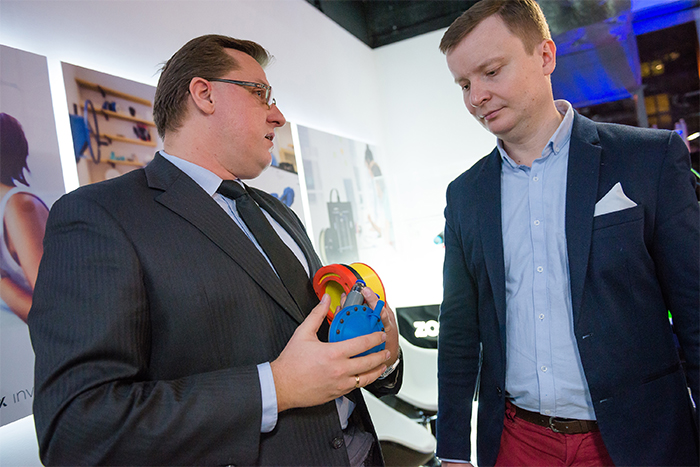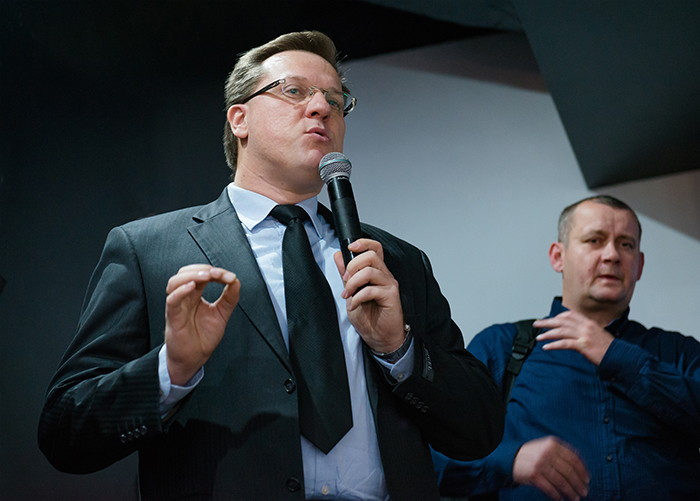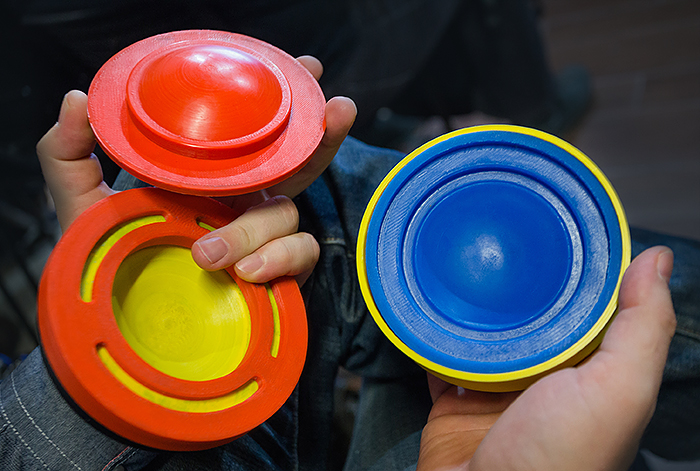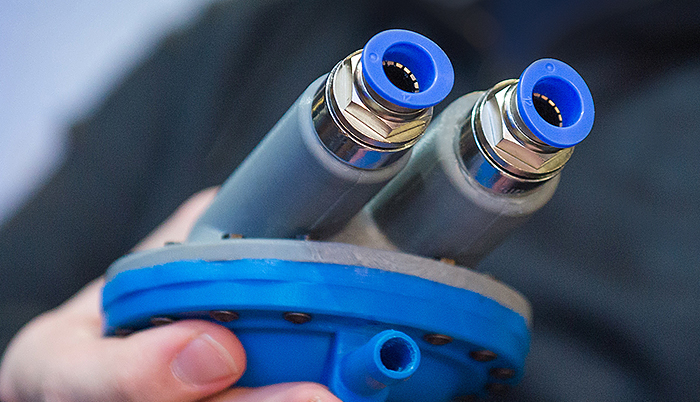Polish Artificial Heart 3D printed on Zortrax M200
Heart is one of the most important and complex organs in every human organism, responsible for performing life activities. Unfortunately, the number of hearts available for transplantation is not sufficient for the number of awaiting patients. The medicine is constantly on the need for artificial heart that could be used as a bridge during the period between of waiting for the surgery. Although there are 3D printers that can print with cells that are biocompatible with the human tissue, creating a model of working artificial heart is still a matter of the far future. Apart from having multiple models of artificial hearts, ventricular assist devices or cardiopulmonary bypasses, making a model of a well-functioning device that can replace the poorly working organ is an urgent need.

Put Heart in Teamwork
The model of the artificial heart was the idea initiated by the team from the Department of Optoelectronics of the Silesian University of Technology coordinated by Prof Tadeusz Pustelny, PhD Eng. A few years ago also the people from the Faculty of Cybernetics of the Military University of Technology in Warsaw joined the project, supervised by Krzysztof Murawski, PhD Eng., Leszek Grad, PhD Eng. and Artur Arciuch, PhD Eng. The main objective of the project was to create a computerized built-in system, including the software and equipment, which is to measure the stroke volume from the chamber of the artificial heart in real time. Together they have already printed 4 models of artificial hearts that are used for tests where by applying particular algorithms, the efficiency of the models is being tested. Having the models of devices that are used to transplantations allows testing the measuring techniques, which boosts the safety of surgeries. Currently three models are used by the MUT and are being tested with the use of camera, and one model is used by SUT for optic examinations. The models created by the teams are inspired by the pump for the pneumatic heart assist device known as Religa EXT, a modernized and more efficient version of POLVAD heart.
Fighting the Figures
Nowadays medicine is developing rapidly fueled mostly by the money gained from grants, governmental funds or other external sources. Still, the money available for scientists working on projects are not sufficient for everyone, especially for cases where research and development involve large financial sources and take many years to finish. The main drawback of such situation is that sometimes teams that consist of highly educated people with revolutionary ideas are forced to stop their study as they are not able to overcome the financial barrier.

It is definitely worth mentioning that in case of creating an artificial heart and the computerized stand, the costs of using the traditional methods were really big, as making a single chamber requires spending a hilarious sum of 500 000 PLN (130 000 USD). However, such high financial outlay didn’t discourage the teams but in fact served as a trigger to search for alternative methods that would allow them to finish their works. The project named “Center of the Advanced Studies on Engineering Systems” led by Tomasz Górski, PhD Eng. allowed them to purchase Zortrax M200 and start work on creating the artificial heart and computerized stand.
Meet the Models
The model of the artificial heart consists of several parts including blood and air chambers which were 3D printed on Zortrax M200 with Z-ULTRAT and Z-PETG. The first material was also used to prepare a mold to cast the diaphragms. The process was divided into 3 stages: first, the model of a diaphragm was created in a modeling program, next the total volume of the diaphragm was checked so the 3D printing of the cast for sililcone molds was prepared. The thickness of the diaphragms in the working part is max. 1mm and its volume is 35 ml.

3D printing and assembling of the artificial heart was in fact only the half of the success, as testing the models required also a professional computerized test stand. Also this time the teams decided to trust in the quality of Zortrax M200 and 3D print all the elements on it. The chamber consisted of more than 12 types of elements including various handles, manifolds and guides. Zortrax 3D printer served also as a tool that allowed to create a model of the chamber. Thanks to the help of the additive manufacturing technology, all the parts were created fast and cost-efficiently, helping the teams to stay within budget and speed up the development of their study. The approximate cost of producing a single artificial heart on Zortrax M200 is 80 PLN (21 USD).
The Matter of a Layer
As one of the team members stresses, the most vital parts that determine the quality and usability of the 3D printed models are layer thickness and material type. In Zortrax M200 devices this parameter can be set by the user who has the possibility to choose from 0.9 to even 0.39, depending on a particular printing material. The thickness is inextricably connected with the level of precision and the overall length of the printing time. Choosing the minimum layer thickness guarantees that the final result will be the closest to the effects obtained by the injection molding machines. It means, that by choosing the small layer thickness we are given the smoothest surface that also makes the process of removing the support much easier. Without any bigger marks left after removing the support, the models don’t require any further post-processing and can be used as end-use products.

The Utility
When it comes to the application of the LPD technology offered by Zortrax, medicine is the field where it can be well incorporated. According to the opinions of the medicians, the technology can be used to create 3D printed models that illustrate and help to understand the particular surgeries and also prototypes of customized prostheses.Having Zortrax 3D printers allows also creating the customized tools that are necessary for performing specific operations but they are not available for purchase. One of the invaluable opportunities given by the 3D printing is ability to create spare parts of devices, so that the repair of the tools is fast and doesn’t involve wasting time and money for servicing. Those of you who are interested in other applications of the 3D printing in medicine can find more in the article about the medical winch 3D printed on Zortrax.
Broad Perspectives
The case of the artificial heart shows the potential of the 3D printing in creating the necessary medical equipment that helps to advance the study on life-saving devices. It is amazing how incorporating 3D printers can push forward the work on artificial heart by allowing not only to create the model but making the complete computerized test stand. Such cases can be encouraging for all the education units and show, that by gaining minimum financing to apply the technology, may provide the necessary basic environment for development of important projects.